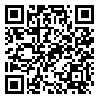Volume 11, Issue 2 (10-2019)
2019, 11(2): 45-52 |
Back to browse issues page
Download citation:
BibTeX | RIS | EndNote | Medlars | ProCite | Reference Manager | RefWorks
Send citation to:



BibTeX | RIS | EndNote | Medlars | ProCite | Reference Manager | RefWorks
Send citation to:
Kouhi R, Amin Sobhani M, Khodakarim S, Panahi R, Ramezankhani A. Hand Hygiene Predictors in the Staff of Tehran Dentistry Centers Based on the Health Belief Model. North Khorasan University of Medical Sciences 2019; 11 (2) :45-52
URL: http://journal.nkums.ac.ir/article-1-1822-en.html
URL: http://journal.nkums.ac.ir/article-1-1822-en.html
1- MSc of Health Education, School of Health, Shahid Beheshti University of Medical Sciences, Tehran, Iran
2- Associate Professor of Endodontics, School of Dentistry, Aja University of Medical Sciences, Tehran, Iran
3- PhD in Health Education & Promotion, School of Medical Sciences, Tarbiat Modares University, Tehran, Iran
4- Professor, Department of Public Health, Shahid Beheshti University of Medical Sciences, Tehran, Iran ,aramezankhani@sbmu.ac.ir
2- Associate Professor of Endodontics, School of Dentistry, Aja University of Medical Sciences, Tehran, Iran
3- PhD in Health Education & Promotion, School of Medical Sciences, Tarbiat Modares University, Tehran, Iran
4- Professor, Department of Public Health, Shahid Beheshti University of Medical Sciences, Tehran, Iran ,
Abstract: (3714 Views)
Introduction: Transmission of infection by the hands of dentists and staff of dentistry centers is a major source of pathogens for patients that may cause clinical infections and can be prevented by proper hygiene. Considering the prevalence of dentistry services in the country, the present paper aims at determining the predictors of hand hygiene among the dentistry centers staff based on the health belief model. Methods: 128 dentistry staff in Tehran with more than 40 dentistry units were selected in a cross-sectional study through multi-stage probability sampling. Data were collected by an author-made questionnaire the validity and reliability of which were measured. The questionnaire included demographic variables, awareness variables, health belief model and behavioral constructs. Data were analyzed using SPSS v.16 using descriptive statistics, Pearson correlation coefficient and multiple regression test.
Results: The obtained scores were in the medium range for the awareness and behavior and good for health belief model. Multiple regression test showed that awareness and health belief model constructs predicted a total of 27.7% of compliance with hand hygiene rules. Among the studied constructs, the perceived barrier construct (P <0.001, β = 0.432) and knowledge variable (P = 0.008, β = 0.205) were significantly predictive of hand hygiene
Conclusions: Emphasis should be made on the perceived barrier variables and awareness as the most important predictors of hand hygiene in the staff of dentistry centers in planning and designing educational interventions and developing educational content based on health belief model
Results: The obtained scores were in the medium range for the awareness and behavior and good for health belief model. Multiple regression test showed that awareness and health belief model constructs predicted a total of 27.7% of compliance with hand hygiene rules. Among the studied constructs, the perceived barrier construct (P <0.001, β = 0.432) and knowledge variable (P = 0.008, β = 0.205) were significantly predictive of hand hygiene
Conclusions: Emphasis should be made on the perceived barrier variables and awareness as the most important predictors of hand hygiene in the staff of dentistry centers in planning and designing educational interventions and developing educational content based on health belief model
Type of Study: Orginal Research |
Subject:
Clinical
Received: 2018/05/12 | Accepted: 2019/02/19 | Published: 2019/10/5
Received: 2018/05/12 | Accepted: 2019/02/19 | Published: 2019/10/5
Send email to the article author
| Rights and permissions | |
 |
This work is licensed under a Creative Commons Attribution-NonCommercial 4.0 International License. |






